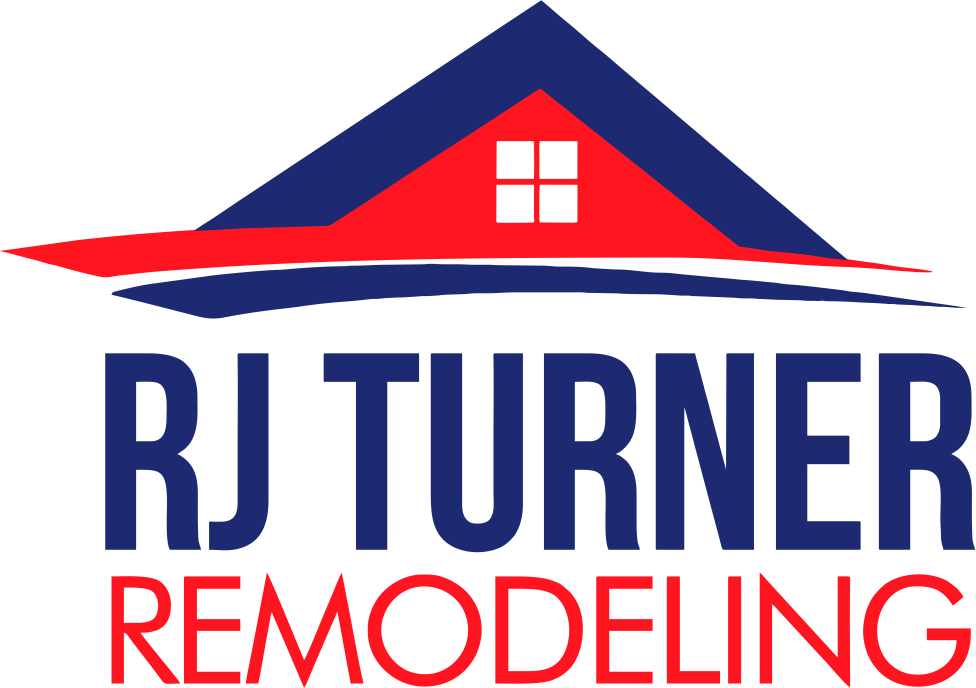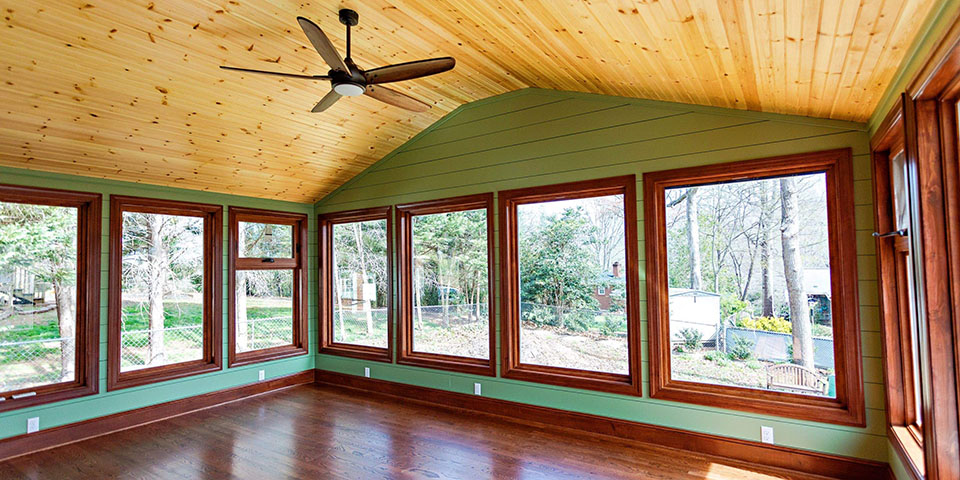Sunrooms are perfect havens of sunlight and cozy patio furniture, providing an ideal retreat to unwind with a refreshing beverage and a captivating book. These transitional spaces seamlessly bridge the gap between your home and the outdoors, granting you a sanctuary that shields you from the elements while allowing you to relish in the harmonious blend of indoor and outdoor living. If the thought of adding a sunroom to your home has crossed your mind, it’s important to explore all the available options. With a multitude of seasonal room variations, materials to choose from, and budget considerations, careful deliberation is necessary. Allow this comprehensive guide to equip you with all the essential knowledge before embarking on your sunroom addition journey.
Types of Sunrooms
There are various types of seasonal rooms to consider when adding a sunroom to your home. Let’s explore the options available:
Traditional Sunroom
A sunroom, also known as a solarium or conservatory, is a delightful addition to your home. It’s a beautifully glassed-in living space that is typically attached to the house and accessible from indoors. This charming extension is designed to provide an additional living area, perfect for enjoying mild weather. However, it’s important to note that sunrooms are not typically connected to your home’s heating or cooling system. As a result, they may not offer optimal comfort during extreme summers or winters.
Four-Season Room
Similar to a sunroom, this alternative is specifically designed for both heating and cooling. By adding a four-season sunroom, it becomes a delightful space that can be enjoyed throughout the entire year. These rooms can be built with various materials, allowing for customization based on your preferences and budget.
Attached Greenhouse
An attached greenhouse structure, much like a sunroom or four-season room, provides ideal lighting, temperature, and humidity conditions tailored for plants. Its construction, mirroring that of a sunroom or four-season room, ensures a harmonious environment for plants to thrive. It’s important to note that an attached greenhouse will require additional heating and cooling systems, as well as proper ventilation.
Screened-In Porch or Room
Instead of glass, this option features mesh-screen windows or walls, providing the benefit of fresh air while keeping insects out. Similar to a sunroom, it is only suitable for use in agreeable weather. Due to the relatively low cost of materials, this is a cost-effective way to incorporate a sunroom into your space.
Best Places to Incorporate a Sunroom
When planning a glass or screen addition, the first crucial step is determining the ideal location for a sunroom. Take into consideration the typical weather conditions of your area and the orientation of the sunroom windows. In regions with colder climates, opting for a southern exposure is highly recommended as it ensures maximum daily sunlight. However, it’s important to note that a southern exposure may result in additional cooling needs, which could potentially increase costs.
An eastern exposure offers the advantage of receiving morning sunlight and shade for the rest of the day, reducing the need for cooling. On the other hand, a western orientation may subject you to intense afternoon sun, necessitating the use of shading mechanisms.
A north-facing exposure results in lower light levels and partial shade throughout the day. In the northern regions, this can lead to a cool and damp room, but in the southern regions, it may obviate the need for window treatments or additional cooling.
Different Sunroom Materials to Consider
Understanding the components of a seasonal room will help you select the type of space you want.
Vinyl
Vinyl is widely regarded as the top choice when it comes to selecting the ideal material for sunroom supports. Not only does it boast affordability and low maintenance requirements, but it also offers exceptional strength and insulation properties. Typically available in white, vinyl supports are commonly designed with a “multiwalled” structure, incorporating internal reinforcements made of either aluminum or galvanized steel.
Aluminum
While aluminum may not provide the same level of insulation as vinyl, it does offer enhanced strength. In cases where rooms utilize vinyl-coated vertical supports for aesthetic appeal or additional insulation, aluminum is often employed as the roof structure. It’s important to note that although aluminum tends to be more expensive, its inclusion serves to bolster the overall durability and stability of the structure.
Wood
While wood may be the pricier option for constructing a sunroom, its suitability for screen rooms cannot be denied. The ability to effortlessly attach screen mesh to the timbers makes it the ideal choice. Just remember, a screen room requires an extension of the existing roof over it. However, it’s important to note that wood does need regular maintenance to ensure it remains in top shape and retains its aesthetic appeal.
Ideas for Sunroom Roofs and Walls
Sunrooms, four-season rooms, and greenhouses feature walls and roofs made of glass or polycarbonate, a durable and transparent thermoplastic material. While a glass roof comes at a higher cost, it offers unparalleled clarity. When selecting, consider the U-value of the glass or polycarbonate, which measures the material’s heat conductivity. Opt for the lowest possible U value to ensure maximum energy efficiency in your space.
To comply with building code regulations, it is imperative that glass walls are equipped with silicone double-sealing, an A-rating, and the appropriate “tempered safety” labeling. Consider the following options, which are deemed as the most optimal choices:
- Double-glazed glass is a remarkable material known for its durability, insulation, and glare-reduction properties. It boasts a typical U-value ranging from 2 to 2.5. When it comes to efficiency, the common glazings can be ranked from most to least efficient as clear, solar bronze, and opal.
- Double-glazed glass with a low-emissivity coating is utilized to enhance energy efficiency. This coating aids in reflecting heat and ultraviolet rays, resulting in a reduced U-value of approximately 1.7. By applying this technology, the glass effectively improves its ability to conserve energy without compromising its functionality.
- Double-glazed glass with argon filling and low-E coating: By incorporating argon, an inert gas, the U-value of the double-glazed glass can be further reduced to approximately 1.48, enhancing its thermal efficiency.
When it comes to polycarbonate components, consider these options:
- 6-millimeter twin-wall polycarbonate: This glazing option is widely preferred in modern conservatory roofs. With a U-value of 2.3, it offers excellent thermal insulation properties.
- 20-millimeter and 25-millimeter twin-wall polycarbonate. To achieve a more robust and thermally efficient roof, consider opting for these thicknesses. By doing so, you’ll create a space that can be enjoyed in any season. The standard U-value for this application is 1.6.
Sunroom Heating and Cooling Ideas
If you’re unable to construct your sunroom in the most ideal location for optimal comfort, or if you desire additional hours to relish in your all-season room, consider exploring these alternatives:
- Install operative skylights to serve as heat vents when the room becomes excessively warm.
- Incorporate pre-fabricated insulating roof panels amidst the glass roof panels. Seek out panels with R-factors of R-16, R-24, or R-32 (higher numbers indicate superior insulation quality).
- Build walls in a way that multiple windows can be opened, strategically selecting those that will work together to maximize airflow.
- Enhance air circulation by installing ceiling fans. Opt for models with both forward and reverse speeds, suitable for use in both summer and winter.
- Incorporate roof shade tracks designed to securely hold rigid exterior sunscreens.
- Select window treatments that can be fully raised or lowered on the walls that experience the highest or lowest temperatures.
- Enhance your winter experience by installing a compact gas wall heater in the area you frequent the most. For an added touch of luxury, consider installing radiant floor heating.
Consider a 2024 Sunroom Addition by RJ Turner Remodeling
A sunroom addition is an ideal way to expand your living space and create a versatile room for year-round enjoyment. Transform your home with a stunning sunroom addition crafted by the expert team at RJ Turner Remodeling. Experience the beauty of natural light and the joy of being surrounded by the outdoors, all while enjoying the comfort and convenience of your own space. Enhance your living experience with a sunroom addition that perfectly blends style, functionality, and craftsmanship. Contact us today to start planning your dream sunroom addition!






